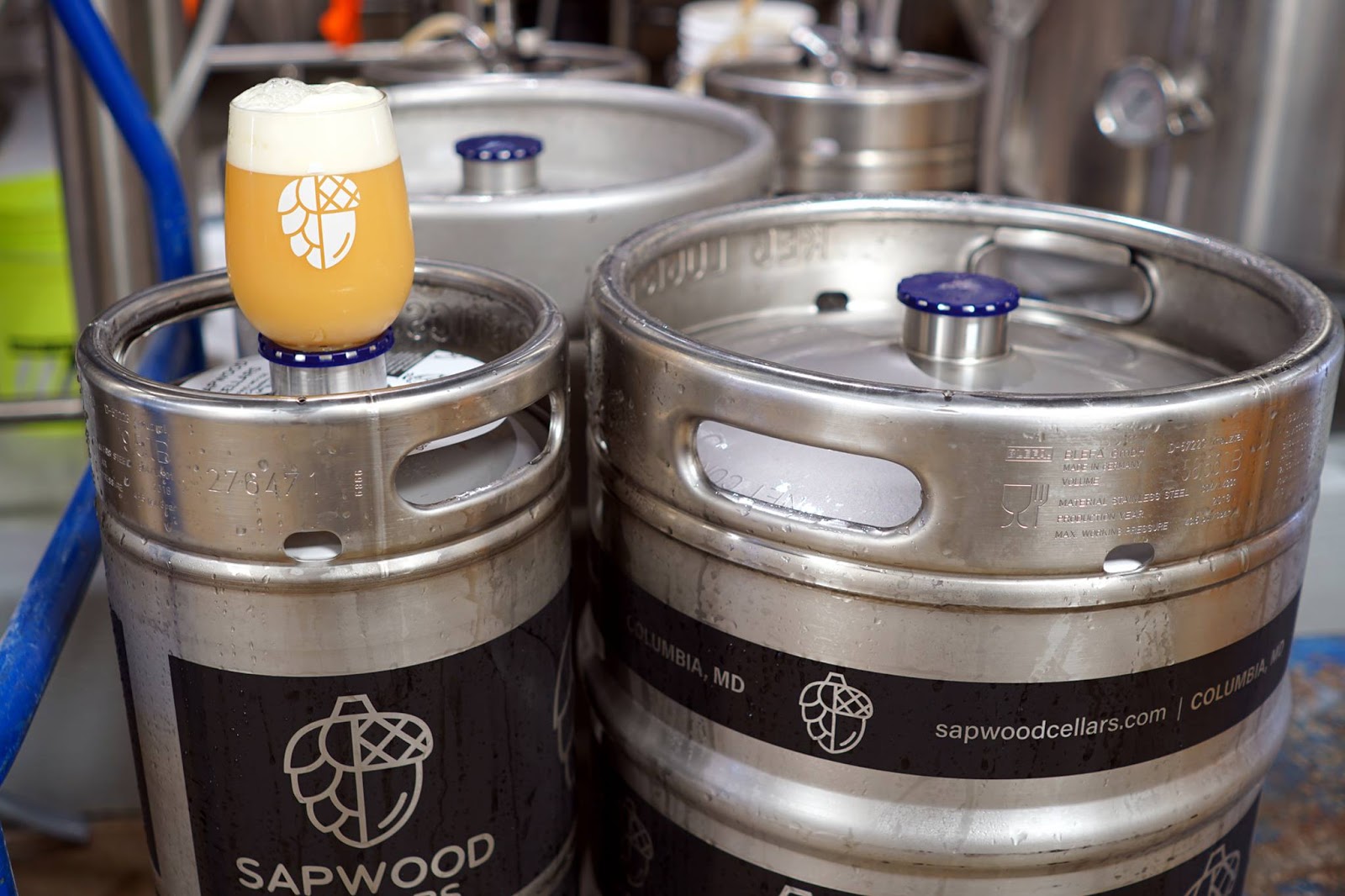Proceeds from sales of the limited edition release will go to various Australian charities.
The post Rolling Stone and Young Henrys release hazy pale appeared first on Beer & Brewer.
Proceeds from sales of the limited edition release will go to various Australian charities.
The post Rolling Stone and Young Henrys release hazy pale appeared first on Beer & Brewer.
Cancelled last year, the event returns and is looking to make up for lost time.
The post Good Beer Week’s tenth anniversary program appeared first on Beer & Brewer.
Why the Adelaide brewery’s portfolio of products has evolved as they’ve grown.
The post The Little Bang theory of brewery evolution appeared first on Beer & Brewer.
We look at all four of the Into the ‘Wood 2020 releases.
The post Stomping Ground’s Into the ‘Wood – a year in review appeared first on Beer & Brewer.
Brewery streamlines their consumer facing presence while expanding their reach.
The post Sydney Brewery launches rebrand appeared first on Beer & Brewer.
Tasmania’s Van Dieman Brewing is holding its annual hop picking day this Saturday.
The post Get a hands on approach to making beer appeared first on Beer & Brewer.
Sydney Brewery’s Pilsner wins best in show at Queensland’s top beer awards.
The post The secret to the success of the quiet achievers appeared first on Beer & Brewer.
Frenchies Bistro & Brewery release three new IPAs plus we revisit some old favourites.
The post French flair for the classics and the contemporary appeared first on Beer & Brewer.
The team behind well-known Sydney brewery to open a brewpub in country NSW.
The post Nomad go overland with new Mudgee brewery appeared first on Beer & Brewer.
Sydney brewery’s expansion includes new tanks, canning line and dedicated barrel room.
The post Wayward to increase capacity by 25 per cent appeared first on Beer & Brewer.
New Zealand-Style Pale Ale and India Pale Ale added to BA’s style guidelines.
The post New Zealand Pale Ales added to style guide appeared first on Beer & Brewer.
Sales of adjunct-laden, higher alcohol sweeter beers have boomed in Australia.
The post Go big and stay home: the rise of the dessert beer appeared first on Beer & Brewer.
IBA, Lion and some in the beer media all affected by social media giant’s stance.
The post Facebook ban hits Australian beer industry appeared first on Beer & Brewer.
Go behind the Counter Culture series with their head brewer and innovation manager.
The post Stone & Wood’s 10 week cycle of ‘fresh air’ appeared first on Beer & Brewer.
Celebrate Winter Bonfire Bash Series, Lumberjack Competition, Frying Pan Toss, Return of Husky Hamburger, Flapjacks & Flannel and Much More Highlight 2021 Winter Events Central Virginia’s Stable Craft Brewing at Hermitage Hill, an authentic working farm brewery and winery, is pleased to announce its 2021 January through March special event schedule. Saturday’s will come alive […]
The post Stable Craft Brewing At Hermitage Hill Announces 2021 January – March, 2021 Special Events appeared first on CraftBeer.com.
Brewpubs boost flavor on their menus by pouring their beers into the pizza dough and serving up the perfect slice.
The post Beer-infused Pizza Dough is a Perfect Brewpub Pairing appeared first on CraftBeer.com.
“Champion Brewery” has a nice ring to it, and that’s just what Beer52 — a United Kingdom based craft beer cultivation and subscription organization that serves thousands of international brews annually throughout the UK — has named The Virginia Beer Company. There is no secret that Williamsburg’s Virginia Beer Co. loves sharing beers & cheers […]
The post Virginia Beer Co. Receives Top International Recognition appeared first on CraftBeer.com.
These classic Christmas beers from craft breweries pair perfectly whether you’re looking to share a bottle with friends or enjoy as you’re decorating the house for the holidays.
The post 12 Beers of Christmas appeared first on CraftBeer.com.
The holidays are an opportunity to combine your favorite beer styles with your favorite foods. Here is some simple holiday beer pairing advice.
The post Simple Holiday Beer and Food Pairings appeared first on CraftBeer.com.
 Mitch Steele joins me this week to discuss brewing low-calorie and low carbohydrate beer as well as seltzer. Subscribe on iTunes to Audio version or Video version or Spotify or Google Play Download the MP3 File– Right Click and Save As to download this mp3 file. Your browser does not support the audio element. Topics […]
Mitch Steele joins me this week to discuss brewing low-calorie and low carbohydrate beer as well as seltzer. Subscribe on iTunes to Audio version or Video version or Spotify or Google Play Download the MP3 File– Right Click and Save As to download this mp3 file. Your browser does not support the audio element. Topics […] The #1 winter seasonal beer1 returns with a crisper and brighter recipe and festive inspiration for holidays spent at home BOSTON, MA, Nov. 9, 2020—Samuel Adams brewers recognize the winter season will feel different this year, with many Americans taking “home for the holidays” literally. To spread some holiday cheer when drinkers need it most, […]
The post Samuel Adams’ New Winter Lager Brings A Wintery Remix To Holiday Classics appeared first on CraftBeer.com.
272 medals awarded to 240 breweries in world’s most prestigious professional beer competition Boulder, Colo. • October 16, 2020 — The Brewers Association (BA) awarded 272 medals* to 240 breweries across the country during the 2020 Great American Beer Festival (GABF) competition awards ceremony. The best beers in 91 beer categories covering 170 different beer styles (including all subcategories) were awarded gold, silver, and bronze medals during a virtual ceremony hosted on The Brewing Network. Judges for the 34th edition of […]
The post Winners of 2020 Great American Beer Festival Competition Revealed During First-Ever Virtual Ceremony appeared first on CraftBeer.com.
Fall is in the air and that means one thing: harvest season! Brewing with fresh hops is a meticulous process, having to rely on bountiful bines and timing of wet hops plucked, packaged, and shipped overnight via air freight to align with a brew day built around the arrival of those hops and those hops alone…and this […]
The post Virginia Beer Co. Celebrates Harvest Season With Two Wet-Hopped Recipes appeared first on CraftBeer.com.
 This week Marshall Schott joins me to discuss how many “short and shoddy” shortcuts you can take when brewing beer and still produce good beer. Subscribe on iTunes to Audio version or Video version or Spotify or Google Play Download the MP3 File– Right Click and Save As to download this mp3 file. Your browser […]
This week Marshall Schott joins me to discuss how many “short and shoddy” shortcuts you can take when brewing beer and still produce good beer. Subscribe on iTunes to Audio version or Video version or Spotify or Google Play Download the MP3 File– Right Click and Save As to download this mp3 file. Your browser […]  Dr Charlie Bamforth, Professor Emeritus from the University of California at Davis joins me this week to discuss beer brewing yeast. Subscribe on iTunes to Audio version or Video version or on Google Play Download the MP3 File– Right Click and Save As to download this mp3 file. Your browser does not support the audio […]
Dr Charlie Bamforth, Professor Emeritus from the University of California at Davis joins me this week to discuss beer brewing yeast. Subscribe on iTunes to Audio version or Video version or on Google Play Download the MP3 File– Right Click and Save As to download this mp3 file. Your browser does not support the audio […] 
Calcium | Chloride | Sulfate | Sodium | Magnesium | Carbonate |
100 | 110 | 50 | 15 | 10 | 90 |